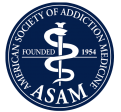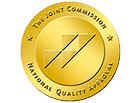Morphine Addiction Treatment
The opioid crisis is killing America, but news clips revolve around drug users shooting heroin on the streets and overdosing on fentanyl, or popping prescription painkillers. There is relatively little talk about the opiate that other opiates and opioids are compared to in terms of potency and strength: morphine. Morphine addiction is a major problem in the United States, with over 2 million people estimated to be addicted to prescription opioids alone.

What is Morphine?
Morphine is often considered to be the original opiate painkiller, which dates back as far as 1805. The drug morphine is derived from opium, which is derived from the poppy plant. Morphine brand name medications include:
- Avinza
- Kadian
- Ms Contin
- Morphabond
Primarily used in medicine as a pain-reliever to treat pain ranging from moderate to severe, for people recovering from surgery, suffering from cancer, or for ongoing pain management.
How Does Morphine Work?
The drug affects the mind and body the same way as other opiates; opioids induce the flood of dopamine and other neurotransmitters in the brain. These chemicals bind to opioid receptors and inhibit the natural recycling of dopamine in the brain. This physical rewiring change’s the brain’s chemistry and requires larger and more frequent doses to achieve the desired effect and is what leads to tolerance and dependence.
Side Effects of Regular Use
While the therapeutic use of morphine for short periods of time in individuals with no history of substance abuse is generally considered safe, there are still potential side effects to be aware of. Regular side effects of morphine use may include:
- Cramps
- Constipation
- Drowsiness
- Weight loss
- Constricted pupils
- Fever
- Elevated blood pressure
- Thirst
- Swelling
- Muscle spasms and pain
- Nausea and vomiting
It’s important to note that these side effects can vary from person to person and may not occur in every individual who takes morphine. However, it’s always best to be aware of these potential risks so you can monitor your body’s reactions while using this medication.
Is Morphine Addictive?
Classified as a Schedule II substance by the Drug Enforcement Administration, morphine has a high potential for abuse and addiction and dependence can develop over the first few times taking it.
This is because morphine absorbs into the body quickly and, like other opiates, changes the way the brain responds to pain. Like other opioids, morphine is often abused to self-medicate and achieve a sense of euphoria. With all opiate painkillers, tolerance develops quickly which leads to psychological and physical dependence and eventually, addiction.
How Do People Abuse Morphine?
The drug is administered as both morphine sulfate tablets and as a liquid through intravenous means, and is sold on the streets in both forms. Morphine can also be prescribed and abused in its tablet form.
How Morphine Addiction Develops
Like other pain management medications, individuals will develop a tolerance over time, which turns into a need for more and that sends them spiraling into dependence. Once dependence has started, the pain of withdrawal, or the inability to cope without the substance becomes a full blown addiction. Most people do not even realize that they are developing the tolerance that sets the whole chain reaction into motion. Commonly, this happens even using as directed by a healthcare professional.
A lot of times, the fault lies in the general doctor or healthcare provider. Commonly, patients will run into the following problems or experience with their physician:
- They don’t have experience recognizing the signs of morphine dependence
- They don’t realize that their patients are developing morphine tolerance
- They do not properly wean the patient off of morphine and then on to non-narcotic medications or provide relief therapies
- They are over prescribing or giving longer prescriptions than they should
- Have not worked in a residential or intensive outpatient (IOP) substance abuse detoxification and rehabilitation treatment center for at least 1 year
The last note is a best case scenario – but it is very helpful for medical professionals to understand exactly what the drugs they are prescribing do and how to help them!
The Over-Prescribing of Opioids
Many doctors are unfortunately poorly trained in the dangers of opioids, or, how to safely monitor and prescribe them. In our overmedicated culture, painkillers tend to be handed out like candy, with little education. When dependence or addiction sets in, most general doctors are not properly equipped to help.
Unfortunately, a lack of understanding around the dangers of morphine has led to widespread misuse and abuse of this powerful and addictive narcotic on the streets. While doctors are now far more hesitant to prescribe morphine, it is still a commonly used drug in medical settings for severe pain management. On top of this, the damage from over-prescribing opioid medications has already been done, with millions of people in the United States alone suffering from dependence or addiction to opioids.
Street Names for Morphine
Illicit street drugs have become a major issue in society, with one of the most commonly abused substances being morphine. This powerful and addictive opioid is often used as a painkiller, but it can also produce euphoric effects that make it appealing to those seeking a high. It is important for individuals to be aware of the different street names and slang terms associated with morphine in order to recognize its presence and dangers.
Some of the street names for morphine include:
- Dreamer
- Emsel
- First Line
- God’s Drug
- Hows
- M.S.
- Mister Blue
- Morf
- Morpho
- Unkie
These terms may be used by drug dealers or users in order to avoid detection from law enforcement or loved ones. However, knowing these names can also help individuals identify potential signs of morphine use in themselves or others.
What Are the Side Effects of Morphine Abuse?
The side effects of morphine abuse are the same as the side effects associated with other opiates and opioids.
Short-term effects of morphine abuse may include:
- Drowsiness
- Slowed breathing
- Constricted pupils
- Opioid-induced constipation (OIC)
- Decreased sex drive
- Changes in mood
- Nausea
- Nervousness
- Headache
Long-term effects of morphine abuse might consist of:
- Intense cravings
- Anhedonia
- Depression
- Inability to manage stress
- Impulsivity or riskiness
- Nutrition problems
- Collapsed veins
IV use of morphine can also increase the risk of contracting contagious blood diseases like HIV and hepatitis C. Long-term use also can lead to dependence and withdrawal symptoms when trying to quit.
Other Signs of Morphine Abuse and Addiction
Morphine dependent people compulsively seek morphine or any suitable opioid substitute. Despite the health, legal and social consequences often associated with their addiction. Many times this leads to using street narcotics, or seeking multiple doctors to get as many prescriptions as possible. In some cities, pain management clinics have opened for no reason other than to deal out prescriptions or pills. Typically, these clinics are shut down quickly.
If you notice any erratic behaviors, financial difficulties or reduction in health, there is a chance that an opiate addiction is present. If some one you know is addicted to morphine, seeking treatment could save their life.
Morphine Withdrawal Symptoms
Many factors will affect the severity and duration of withdrawal. Your age, overall health and how much you’ve been abusing will all change one person’s experience from another. Symptoms of withdrawal can start as early as 6 hours after the last dose and persist for 10 days or more (in more serious cases).
Symptoms of Withdrawal:
- Muscle aches
- Sweating
- Diarrhea
- Vomiting
- Seizures
- Dilated pupils
- Mood swings
- Hallucinations
- Anxiety
- Delusions
- Insomnia
- Cravings for the drug
Due to the extreme nature of opioid withdrawal, we recommend medically assisted detox from a licensed and professional facility near you, such as Royal Life Centers.
Morphine Withdrawal Timeline
It is important to understand that withdrawal from drugs or alcohol can be a difficult and uncomfortable process. The severity and duration can vary greatly from person to person depending on a variety of factors.
- Age: one factor that can play a role in the intensity of withdrawal symptoms is age. Older individuals may have a harder time detoxing due to changes in their body and metabolism. This can make the process more physically taxing and increase the risk of health complications during withdrawal.
- Poor health: Those who have preexisting medical conditions or weakened immune systems may experience more severe symptoms during withdrawal. It is crucial for these individuals to seek medical supervision during their detox process to ensure their safety and well-being.
- Length and severity of substance abuse: the way you abuse substances also impacts the intensity of withdrawal symptoms. Those who have been using a substance for an extended period of time or in high doses are likely to experience more severe and prolonged symptoms. This is because their body has become dependent on the substance and may have a harder time adjusting to its absence.
- Mental health: psychological health can also play a significant role in the intensity of withdrawal symptoms. Those with co-occurring disorders, such as anxiety or depression, may have a more difficult time managing their emotions during detox. This can lead to increased cravings and potential relapse if proper support and treatment are not provided.
It is important to note that everyone’s experience with withdrawal will be unique, and there is no set timeline for how long it will last. At Royal Life Centers, our medical professionals and treatment team are here to support you through this difficult process.
How Dangerous is Morphine Abuse?
Morphine is a Schedule II narcotic that is abused orally, snorted, smoked or injected. Morphine, when broken down and processed becomes heroin. Because they are so chemically similar, they share very similar risks when it comes to addiction and withdrawal. Since morphine is the original painkiller, with a long history of use and misuse, it is often the standard when it comes to understanding other opiates.
You can look at it like this:
- Morphine is stronger to Codeine.
- Hydrocodone is 1.5 times stronger than morphine.
- Oxycodone is 1.5 to 2 times stronger than morphine.
- Fentanyl is 50 to 100 times stronger than morphine.
While there are other synthetic opioids stronger than morphine, it is the most powerful natural opioid medication. While morphine can effectively manage severe pain, it can have dangerous, life-threatening consequences when abused.
Morphine Overdose Signs and Symptoms
One of the biggest risks of abusing morphine is the potential for overdose and death. Because it is a powerful medication, taking too much can lead to respiratory depression, where breathing becomes slow and shallow or even stops completely. This can be fatal if not treated immediately.
Other signs of overdose include:
- Face swelling
- Finger swelling
- Elevated blood pressure
- Fever
- Impaired Focus
- Blue nails
- Blue lips
During severe overdose to morphine or any similarly powerful opiate, your breath will become increasingly shallow and you will begin to lack oxygen. This creates a nearly bluish tint to your skin, nails and lips. If you ever see a friend or loved one get to this point, it is vital to call 911 immediately.
Treatment for Morphine Addiction
Many people struggling with opioid addiction find themselves in a constant cycle of using and trying to fulfill their daily responsibilities. This often leads to feelings of guilt, shame, and being overwhelmed by the weight of these competing obligations. The reality is that when someone is in the grips of opioid addiction, their brain has been hijacked. Their priority becomes getting more opioids at all costs.
But there is hope for those dealing with this struggle. By seeking help from a professional treatment center like Royal Life Centers, individuals can begin the journey towards recovery and regaining control over their lives. Our trained staff understand the complexities of opioid addiction and provide personalized treatment plans that address both the physical and psychological aspects of the addiction.
Morphine Detox
Detoxification is often the first step in treatment for opioid addiction. This process involves safely removing the drugs from the body and managing any withdrawal symptoms that may arise. Royal Life Centers offers medically supervised detox programs to ensure a safe and comfortable experience for our clients.
Medical detox typically lasts 5-10 days, though some side effects of the withdrawal may persist. Although it is very unpleasant, withdrawal from opiates are not usually life threatening as it is with Valium or alcohol. Serious side effects, such as seizures or hallucinations may occur if you try quitting cold turkey which is why it is advised to always work with a medical team.
Medication-Assisted Treatment for Opioids
Medication-assisted treatment (MAT) for opioid addiction combines FDA-approved medications with counseling and behavioral interventions to help reduce cravings and withdrawal symptoms while promoting long-term recovery. This comprehensive approach has proven to be highly effective in helping individuals break free from opioid addiction, making it easier to focus on recovery and other obligations.
Therapies
At Royal Life Centers, we believe in a holistic approach to recovery. This means addressing not just the symptoms of addiction, but also underlying issues such as trauma or mental health disorders that may be contributing to the addiction. Our team of experts use evidence-based therapies alongside alternative treatments like yoga and meditation to help individuals build healthy coping mechanisms and find inner peace.
During individual counseling, group therapy, and family support sessions, clients work to address the root causes of addiction and develop healthy coping mechanisms for dealing with stress, trauma, and other triggers.
What To Expect In Recovery from Morphine Addiction
When participating in a full continuum of care, you can progress through each treatment program offered at Royal Life Centers. Starting with detox, and inpatient, you can learn the underlying causes of you addiction and begin practicing healthy coping skills to break toxic patterns of thinking and behaviors. Then, you can transition into partial hospitalization and intensive outpatient where you can live at home or in sober living while you continue practicing healthy routines that promote a lasting, sober lifestyle through sobriety and beyond.
At Royal Life Centers, our holistic, evidence-based approach to psychotherapy incorporates individual and group sessions. In inpatient and outpatient treatment, you participate in regular ongoing treatment and therapy to better understand morphine and drug dependence. In doing so, you will continue to learn coping mechanisms and tactics to prevent relapse. Our addiction treatment also features state-of-the-art activity, movement, and adventure therapies to create one program that treats mind, body, and spirit. We use art, music, and animal therapy to help our guests to learn to express themselves and communicate. These activities are designed to help individuals develop healthy outlets for emotions and improve overall well-being.
Our team at Royal Life Centers believes in treating the whole person, not just the addiction. That’s why our aftercare programs focus on developing life skills and routines that promote a lasting, sober lifestyle through sobriety and beyond. Our goal is not only to help our guests overcome their addiction, but also to equip them with the tools they need to thrive in all aspects of their lives.
Help with Opioid Addiction and Morphine Abuse
If you or a loved one has an opioid use disorder, please reach out to us for support or to learn more about your treatment options. Our addiction therapists treat substance abuse using an individualized approach to therapy, as well as medication management.
Royal Life Centers at Sound is an outpatient treatment facility located in Lacey, Washington. We treat dependence on alcohol, methamphetamine, opioids, cocaine, and benzodiazepines and offer care at the PHP, IOP, OP, and sober living level. Please contact us at any time at (877)-RECOVERY. Because We Care.
Change your life with one call.
We can help.







